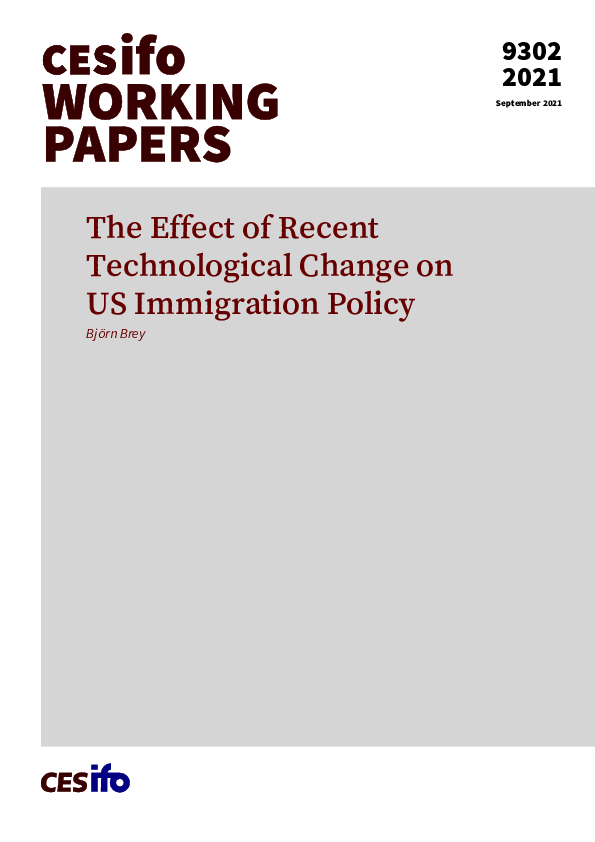The Effect of Recent Technological Change on US Immigration Policy
CESifo, Munich, 2021
CESifo Working Paper No. 9302

Did recent technological change, in the form of automation, affect immigration policy in the United States? I argue that as automation shifted employment from routine to manual occupations at the bottom end of the skill distribution, it increased competition between natives and immigrants, consequently leading to increased support for restricting low-skill immigration. I formalise this hypothesis theoretically in a partial equilibrium model with constant elasticity of substitution in which technology leads to employment polarization, and policy makers can vote on immigration legislation. I empirically evaluate these predictions by analysing voting on low-skill immigration bills in the House of Representatives during the period 1973-2014. First, I find evidence that policy makers who represent congressional districts with a higher share of manual employment are more likely to support restricting low-skill immigration. Second, I provide empirical evidence that representatives of districts which experienced more manual-biased technological change are more likely to support restricting low-skill immigration. Finally, I provide evidence that this did not affect trade policy, which is in line with automation having increased employment in occupations exposed to low-skill immigration, but not those exposed to international trade.